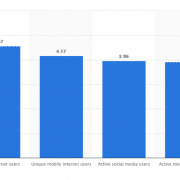5 Benefits of Flexible Packaging

1. Increased Design Options
Some designs don’t favor a product package that’s boxy or rectangular. It restricts what designs will work and limits the options for creatives. However, flexible packages such as a foil pouch or even a bag, create new opportunities to implement interesting eye-catching designs. Also, being non-traditional shapes, they encourage shoppers to touch them and see how they feel. This increases the level of interaction with the packaging as part of the overall buying experience for the consumer. On the product coding side of things, an inkjet case coder from a company like Diagraph can provide a solution to correctly code products during production runs.
2. Extend Shelf Life
For some products, the use of flexible product packages boasts the opportunity for extended life, especially for fresh produce. While the packaging used to transport the product to its retailer destination may be robust, the retail-level packaging may allow it to breathe or adjust in shape to avoid restricting it.
3. Re-Closure & Re-seal Packaging Solutions Preferred by Consumers
Some flexible packaging is designed not just to contain a product, but to allow it to be accessed, and re-accessed again safely. Especially in the food category, but also relevant for supplements and other categories too, the ability to open the packaging to access the product, to re-seal it again, and do so repeatedly to retrieve small amounts of what’s contained inside is highly useful. These types of solutions can prevent the item from being exposed to too much air, causing it to go stale, lose or change its taste, or suffer other undesirable consequences.
It also prevents someone from needing to use all the supplies quicker than they’d prefer, otherwise it’ll go bad in a day or two once opened. Subsequently, consumers can safely purchase larger volumes and not worry about their longevity.
4. Reduce Waste in Landfills
On the manufacturing side, it has been found that flexible packaging has the benefit of needing less energy to produce and, depending on the product, less H2O too. It’s also lightweight compared to other packaging options, resulting in transportation savings with increased boxes per shipment. Because flexible packaging flattens out better, it requires less space if it gets to a landfill (and isn’t recycled properly).
5. Fewer Greenhouse Gases
Producing flexible packaging is less intensive and so machinery produces fewer emissions. Because it is more efficient to transport it from the manufacturing plant to the retailer, delivery trucks generate fewer greenhouse gases or carbon because lighter packaging requires pushing their truck engines less to get to their destination. Every little bit helps in this regard.
Flexible packaging is taking off because it’s an interesting solution for consumers looking for something different. It is also environmentally friendlier, lighter, and allows for new design ideas to compete in competitive marketplaces.













Leave a Reply
Want to join the discussion?Feel free to contribute!